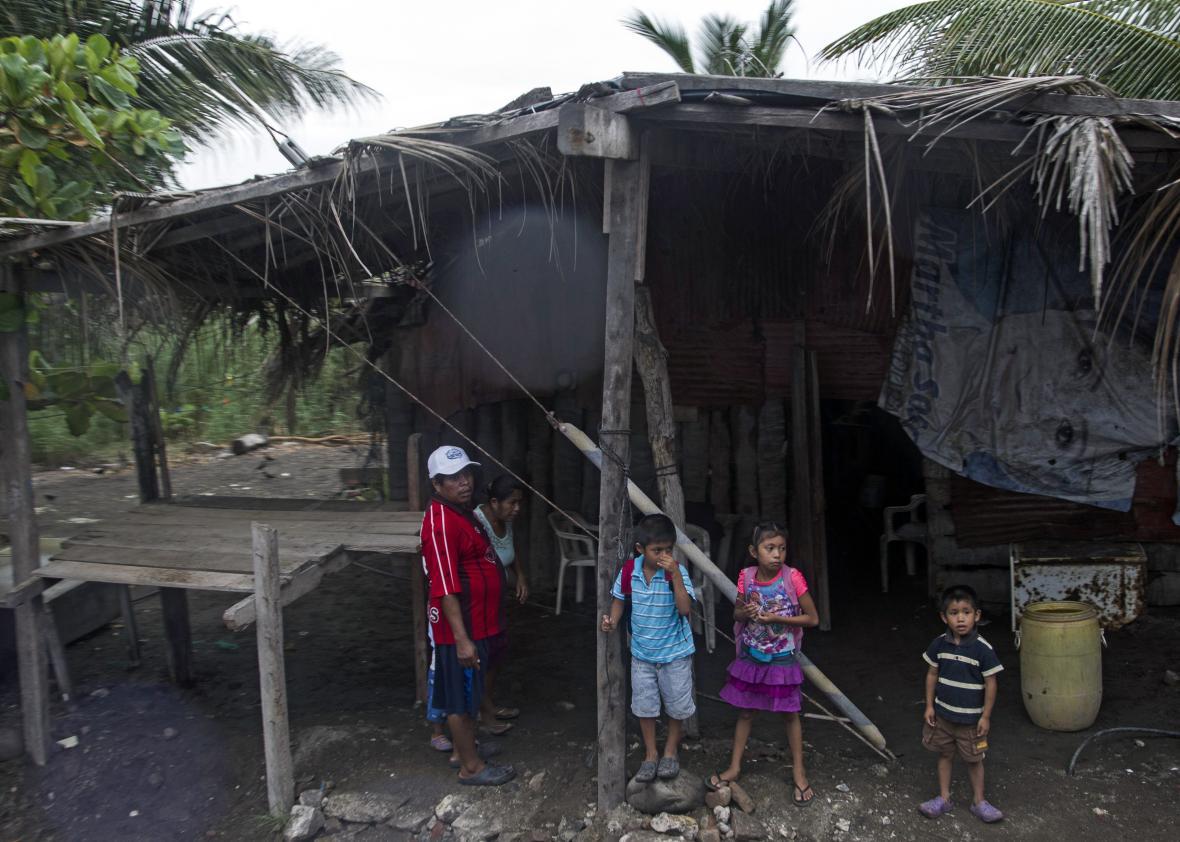Hurricane Patricia—now the strongest hurricane ever measured—is expected to make landfall in Mexico late Friday. According to the latest official forecast from the National Hurricane Center, Manzanillo, a city of 100,000 people, appears to be in Patricia’s direct path.
After seeing the incredible data gathered by hurricane hunter aircraft overnight, a few meteorologists have argued that Patricia could be thought of as a Category 7 hurricane—though the official Saffir-Simpson scale only goes up to 5. Here’s the official description of likely damage from a Category 5 hurricane—like 1992’s Andrew in Florida, and 2013’s Haiyan in the Philippines—suitable for your nightmares:
A high percentage of framed homes will be destroyed, with total roof failure and wall collapse. Fallen trees and power poles will isolate residential areas. Power outages will last for weeks to possibly months. Most of the area will be uninhabitable for weeks or months.
The original justification for cutting off the scale at 5 is that no human-built structure could withstand winds above its 155 mph threshold. So essentially there was no point in differentiating between storms once the winds were above 155. Right now, Patricia’s core winds are estimated to be 200 mph—with gusts to 250 mph—as strong as the tornado that destroyed Joplin, Missouri, in 2011, but at least 15 times larger in area. As I wrote earlier today, Patricia, at its current strength, is close to the theoretical maximum strength for a tropical cyclone on planet Earth. In fact, at one point on Friday morning, Patricia actually went above its maximum potential intensity.
How did Patricia get to be so strong? The answer, quite simply, involves human-caused climate change. Hurricane Patricia is exactly the kind of terrifying storm we can expect to see more frequently in the decades to come. Although there’s no way to know exactly how much climate change is a factor in Patricia’s explosive strengthening, it’s irresponsible, at this point, not to discuss it.
Scientists who study the link between hurricanes and climate change have long predicted, and debated, the trend of stronger tropical cyclones. The latest science seems to have settled on climate change boosting the frequency of the strongest hurricanes, even as total hurricane numbers may remain flat. Chris Mooney, at the Washington Post, gives a good overview of that science in the context of Patricia. Basically, storms like Patricia fit closely with these predictions, though they happen so infrequently that it’s almost impossible to definitively prove.
Meteorologically, there are at least four reasons why global warming could have contributed to Patricia’s ferocity: El Niño, exceptionally warm ocean temperatures, increased atmospheric humidity, and sea level rise.
The first two are related. Right now, the Pacific Ocean is in the middle of a near-record strength El Niño, which has boosted global ocean temperatures to the highest levels ever observed. Current water temperatures near Hurricane Patricia are some of the hottest on the planet, and well above normal. Recent research has shown that El Niños have become more intense in recent decades, and that climate change could double the frequency of strong El Niños by the end of the century. However, climate scientists are still very much debating this point—mostly because it’s generally difficult to attribute a climate change trend to events that are already fairly rare. Strong El Niños, like the current one, happen only a few times a century.
What’s easier to attribute is the fact that, El Niño or not, the temperature of global oceans—and more importantly, the total heat content stored in the top layer of the world’s oceans—is skyrocketing. The carbon dioxide released by fossil fuel burning does a great job of trapping the sun’s energy, and recent research has shown most of that energy—more than 90 percent—is being funneled into the oceans. Hurricanes use that extra energy as fuel for the thunderstorms that swirl around their centers. Warmer water increases the intensity of updrafts, which draw in humid, tropical air, and in turn increases the chances of rapid storm intensification. In this way, storms forming in today’s climate probably have a better chance to reach their maximum potential intensity, as Patricia has.
Since higher air temperatures boost evaporation rates, heavier rainfall is also an already-proven side effect of climate change. Higher humidity levels also provide more fuel for developing hurricanes, since intrusions of dry air into the storms’ centers can sometimes slow the intensification process. As Patricia makes landfall, it’s expected to produce up to two feet of rain in just a day or so along the slopes of Mexico’s coastal mountain range—creating a risk of devastating flash floods and mudslides.
As sea levels rise from melting glaciers and polar ice, the damage caused by storm surge—the deadliest aspect of a hurricane landfall—has also increased. In Manzanillo, the city nearest Patricia’s likely landfall location, the ocean has risen by about 8 inches over the past 50 years, in line with the global average. Since El Niño’s boost of warm water also tends to produce a temporary rise in sea levels, the ocean is probably an additional 8 inches higher in Manzanillo right now. Both of those figures are on top of Patricia’s storm surge, which could top 15 feet.
Even though it may not make sense from a wind speed perspective to create new hurricane categories, the fact that super hurricanes like Patricia may be becoming more common and that storm surge is a far deadlier threat anyway means that, from a public warning perspective, it may be time to revise the Saffir-Simpson scale. Patricia has made my vote clear: Climate change means we need a Category 6.
